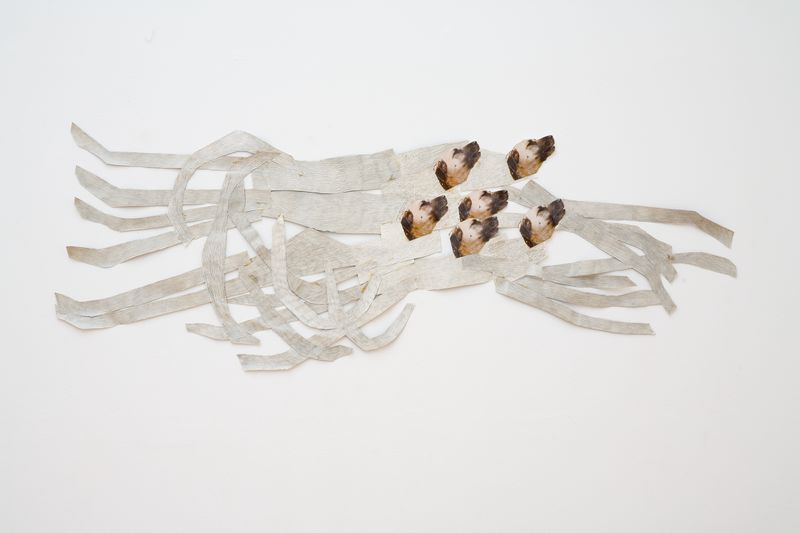Texture, colour, and atmosphere
His earliest sculptures depicted abstract human and animal figures, such as the disturbing sculpture Dying horse. From the 1950s on, he created austere geometric sculptures made of iron, to which he applied the principles of symmetry, rotation, and repetition. This phase was followed by more imaginative sculptures that incorporated combinations of discarded and natural materials. Visser's primary focus was on texture, colour, and atmosphere. An excellent example of this is Jumping: a fragile construction of glass plates and ostrich eggs that rests atop a 'plinth' of straw and is crowned with a bouquet of ostrich feathers.
Pencil drawings and collages
In addition to these sculptures, Visser also created pencil drawings of abstract nature motifs, such as plants, flowers, and mountains. For his collages, Visser often used photo clippings from subjects in his immediate environment, such as his dog in Dora on the run, or from works by his illustrious predecessors, such as Brancusi and Arp.
Art & Project
Carel Visser was associated with the prestigious Art & Project gallery (1968-2001). In 2013, former gallery owner Adriaan van Ravesteijn (1938-2015) donated more than two hundred works of art to the Kröller-Müller Museum. The pieces in this presentation came from this donation and from the Kröller-Müller collection.

